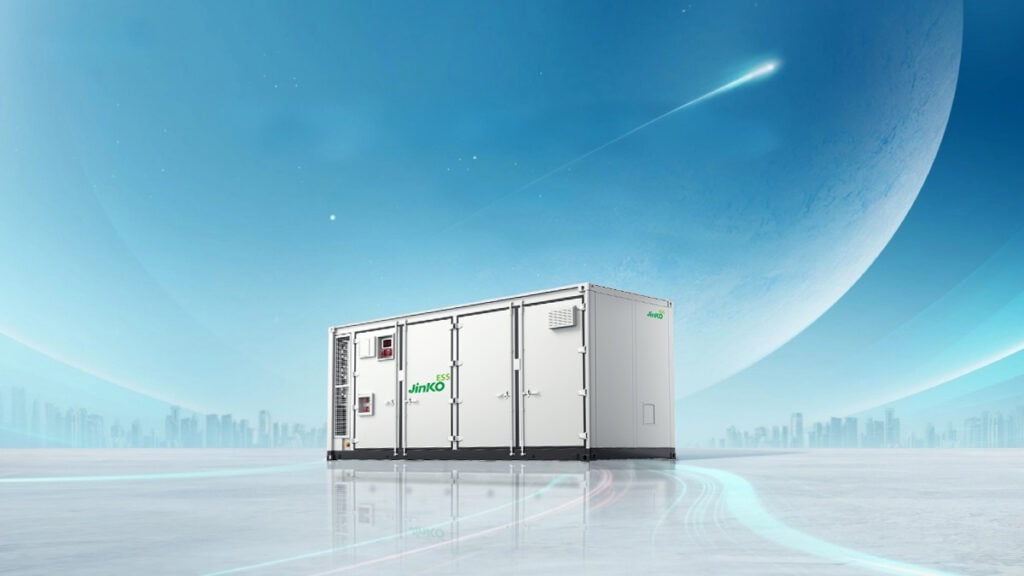
Jinko ESS has announced the signing of a contract for a 100MWh energy storage project with a key client in Greece. The project will deploy 20 sets of the company’s ESS G2 5MWh liquid-cooled energy storage systems (configured for a four-hour duration), distributed across 20 different project sites throughout the country, with delivery scheduled to commence in mid-November. This latest collaboration marks Jinko ESS’s continued expansion in Europe’s distributed energy storage sector, supporting Greece’s efforts to build a flexible and stable clean energy grid.
The G2 system delivers an industry-leading 94% round-trip efficiency, with its four-hour long-duration design enabling active participation in grid peak shaving, load shifting and renewable energy integration, significantly enhancing power system economics and reliability. The modular containerized structure aligns with Greece’s mountainous terrain and scattered island geography, allowing flexible deployment across 20 sites to alleviate regional grid congestion and accelerate local wind and solar energy utilization. The system employs liquid cooling technology to maintain cell temperature differentials within ±2.5°C, combined with multi-layer fire-resistant isolation compartments and a thermal runaway early-warning system, providing triple-layer protection from cells to racks and the entire system, ensuring high reliability for frequent operational maintenance.
Integrated with Jinko ESS’s proprietary Energy Management cloud platform, the system enables real-time monitoring of all 20 sites and optimizes charge-discharge strategies, its on-demand directional cooling technology reducing auxiliary energy consumption by 20% compared to conventional solutions.
Roberto Murgioni, GM Europe for Jinko ESS, commented: “Greece is accelerating progress toward its ‘70% renewable energy by 2030’ target. This innovative multi-site project not only demonstrates the G2 5MWh system’s adaptability to diverse scenarios, but also delivers a cost-effective Jinko solution for Europe’s energy transition.”
